4 Ways Your Family Will Love Eating Greens
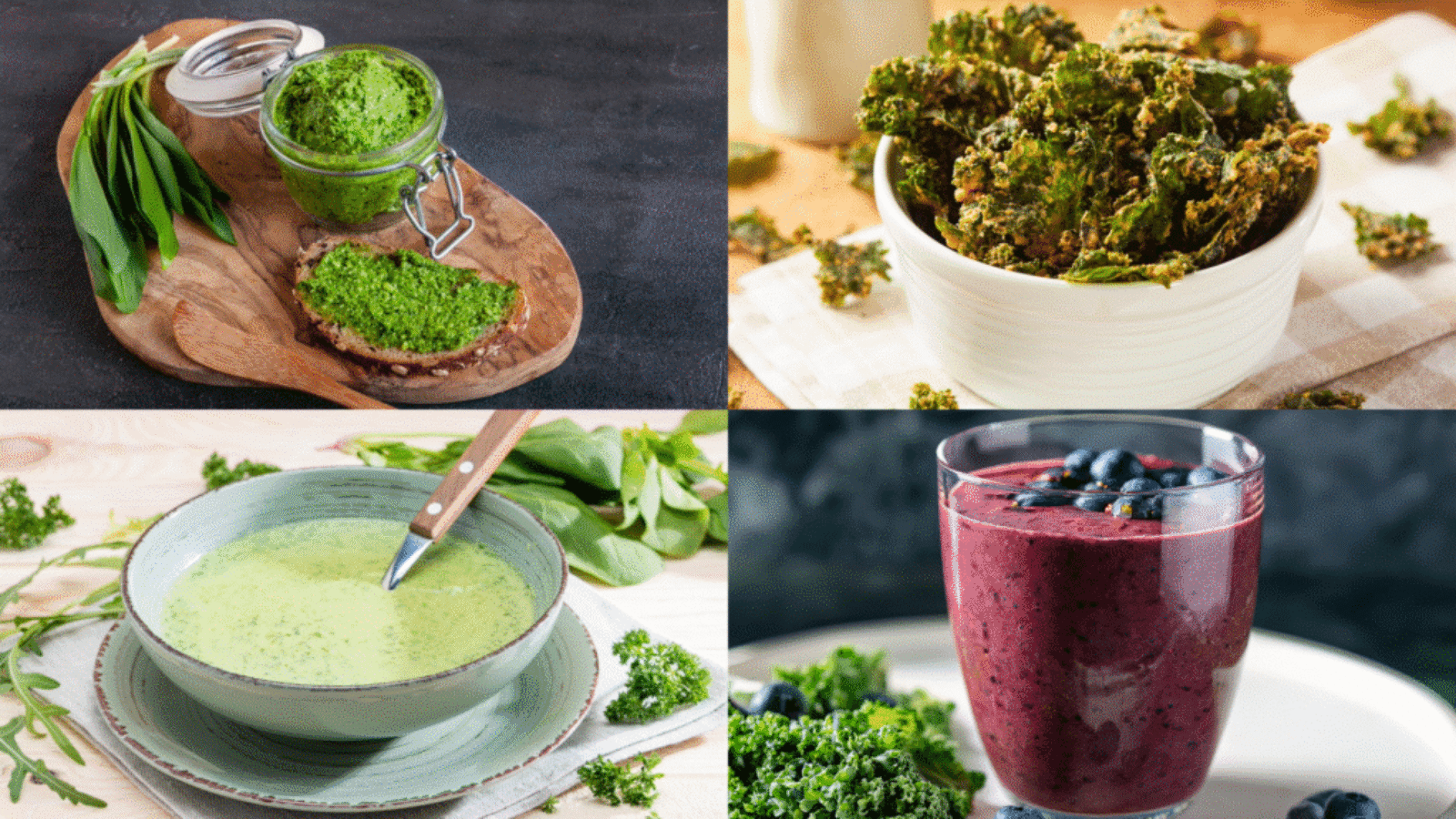
Adding leafy greens to our family’s diet is a crucial component of attaining a balanced nutrition. Leafy greens are packed with nutrients that promote our children’s healthy growth, everyone’s strong bones and muscles, our immune system, our heart health, and more. All while being very low in calories! And yet, so many people still refer to green leaves as “rabbit food” and avoid them because they don’t like the texture of leaves. Rabbit food? How about “bull food” instead? If we want to be “strong like a bull” we should eat our leafy greens.
The good news is that you’re reading this now. No, really, being NutriSavvy includes understanding the nutritional value of adding green leaves into our diet, while knowing the different leafy green alternatives we have at our disposal and the many fun, delicious ways we can prepare them. Take a look!
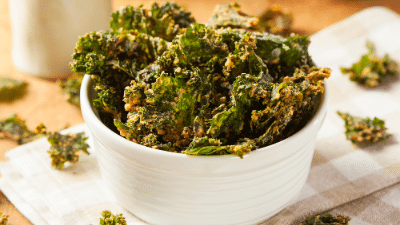 Kale Chips
Kale Chips
My daughter has loved kale chips since she was one year old! They are crunchy and you can give them any flavor you want! These are some of our family’s seasoning favorites:
Thai Chips: Almond butter, lemon or lime juice, a little maple syrup and minced ginger.
Nacho Chips: Lime juice, nutritional yeast, and chili pepper flakes.
Onion Dip: Cashew sour cream, minced yellow onions and a little pinch of salt.
The amounts you use are entirely up to you and your family. My little one asks for extra almond butter, so I oblige. More calcium for her! Of course, if you’re watching your weight or your family’s weight, you might want to limit the amount or use sliced almonds instead. Avoid using oil, excessive sweeteners or salt. Though they are often listed in online recipes, they are not needed to make your kale chips amazing.
Basic steps:
Start by washing your kale, removing the stems and cutting the leaves into smaller pieces. The leaves will get smaller when you dehydrate them so don’t cut them too small.
Try to dry your kale as much as possible. You can use a green leaves spinner, pat it with paper towels or leave it in a strainer basket for a while.
Season your kale with your ingredients of choice and massage it to help it absorb most of the flavors. Then, place on your dehydrator or oven trays, keeping them separated from one another.
If using a dehydrator, set it at 150 F for two hours. If using your over, set it at 250 F for 15 minutes, then toss a bit and leave them for about another 10 minutes. The more seasonings you add to your kale chips, the longer they will take to dry so check if they are crispy enough and add more time if necessary.
Store in a tightly closed container and enjoy handfuls anytime you or your family have a craving for something crunchy. You’ll be surprised at how little they will last!
NutriSavvy tip: Wait 40 minutes between chopping and cooking your kale to get its sulforaphane.
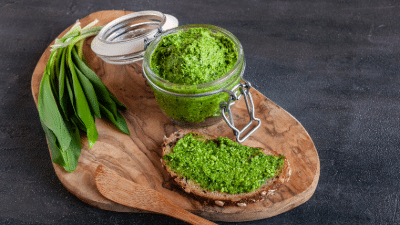 Pesto
Pesto
Pesto is a delicious sauce or spread made out of basil leaves, other leafy greens of your choice, nuts, seeds, and garlic. It is perfect for pasta dishes, pizza, or even to use as a spread on sourdough bread! It is also incredibly easy to make and highly nutritious.
Basic steps:
In a food processor, mix:
2 cups of basil leaves
2 cups of other green leaves (such as spinach, carrot tops, arugula, or dandelion greens)
2-4 garlic cloves
¼ cup of nutritional yeast
the juice of 1 large lemon
1 ½ cups of cashews or sunflower seeds
½ cup of aquafaba (chickpea water)
salt to taste
Blend until you get the desired consistency. Add to your pasta dish, spread on your vegan pizza instead of tomato sauce, or spread on your favorite artisan bread.
Store in the refrigerator for up to five days.
NutriSavvy tip: When following an online pesto recipe, replace olive oil with aquafaba.
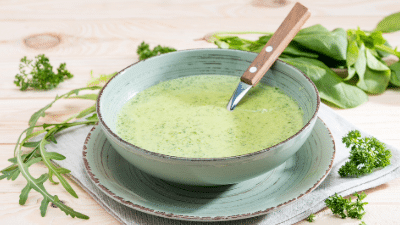 Leafy Greens Soup
Leafy Greens Soup
Leafy greens can be a part of your veggie soup or the main ingredient. Your soup can be chunky or blended. But here are some basic tips to make your soup rich in flavor and nutritional value.
Basic steps:
Chop all your vegetables. Start by chopping any cruciferous leafy greens or vegetables to abide by the 40-minute rule listed above, which allows enough time for sulforaphane to be created. If using onions or garlic, chop them next because guess what? There’s a rule for them too! Wait 10 minutes after you chop, dice, or mince them to enjoy the benefits of another phytonutrient: allicin, which is great for our immune system.
Heat up your pot and dry sauté your onions, and other vegetables like carrots or celery for a few minutes. Add garlic and sauté for another minute.
Add herbs and spices to taste. Start small until you find the right amounts for you and your family. Some great and easy additions include Italian herbs, chili powder, smoked paprika, or curry.
Add the rest of your vegetables and leafy greens. Sauté until they get soft and absorb the spices.
Add low-sodium vegetable broth, your greens, and anything else you wish to add such as diced tomatoes, nutritional yeast, salt and pepper. Wait until the broth is boiling and then simmer for about 20 minutes. Check with a fork to see if all vegetables are fully cooked.
If blending, use an immersive blender to avoid transferring hot liquids into your blender.
Serve warm and enjoy. Wait until it reaches room temperature before refrigerating and store for up to five days.
NutriSavvy tip: If you have a kidney health condition, avoid spinach, chard or beet greens.
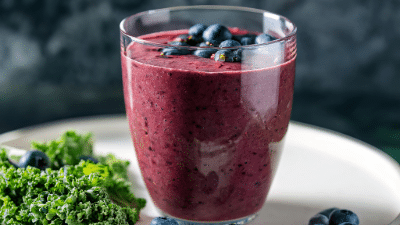 Smoothies
Smoothies
Smoothies are such a delicious, fast, and convenient way of packing in some fruits, oats, nuts or seeds, and leafy greens before heading out to school or other extracurricular activities! At home we always make frozen strawberry and blueberry smoothies with kale. Even when we’re at the store, my daughter often asks for a green mango smoothie which is your basic mango smoothie with one kale leaf.
Whenever possible, avoid adding sweeteners. Instead, include a banana or dates.
Basic steps
Add frozen fruits to your blender, followed by a handful of oats, some seeds or nuts, a handful of greens, and enough plant-based milk to get the consistency you like.
Blend and serve!
NutriSavvy tip: Sneaking in some green leaves is easy, but start small.
Nutrition experts, including Dr. Greger in his Daily Dozen, recommend eating two servings of leafy greens every day. A serving is one cup of raw green leaves or ½ cup of cooked green leaves. If you and your family are not used to eating greens regularly, this can feel a little challenging at first. You might have the best of intentions, fill up your refrigerator with all sorts of greens, only to find yourself throwing them all away, wilted and with a yellowish color, because you forgot to eat them or prepare them. Start small. Make a few dishes every week for you and your family to eat every day. Aim at one portion a day, and once you’re used to this, make it two.
As with everything, think of this as a permanent change and don’t feel bad if you fail to eat your greens one day. The next day, try again.


